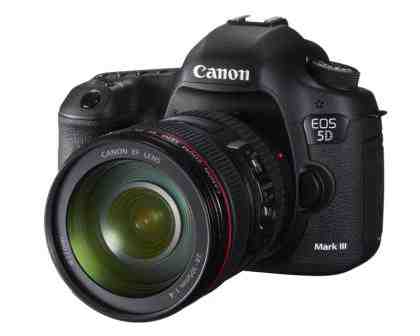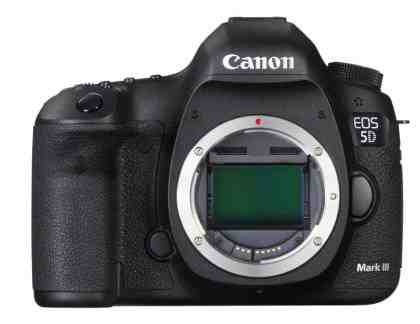Canon's 5D series cameras have gained legendary status over the last seven years. Their full-frame (35mm film-size) sensors clearly identify them as professional quality cameras, yet at around half the cost of Canon's flagship 1D range, they're a tantalising proposition for semi-professional and amateur photographers. Who needs frivolities like holidays or a social life when you could own a full-frame DSLR?

Before we continue, we feel obliged to bring things back down to Earth. The 5D Mark III currently costs a shade under £2,800, but we recommend budgeting the same again for lenses that do it justice. It uses the same EF mount as consumer Canon EOS cameras, but cheaper EF-S lenses are only designed for cropped sensors and will produce an ominous circular frame when attached to the full-frame 5D Mark III.
Canon makes various keenly priced full-frame EF lenses, such as the 50mm f/1.8 (£80) and 28-135mm f/3.5-5.6 (£375), but the pricier L lenses are a better match for the 5DMark III. Canon sent us the 24-105mm f/4L (£930), 100mm f/2.8L Macro (£820) and 50mm f/1.2L (£1,350) for testing, which we got on with very nicely. Total cost including VAT: £5,900. Still, that's not unreasonable for people who earn a living with their camera, and those of humbler means can build up their lens collection slowly.

Mark II users considering an upgrade might be disappointed by the modest boost to the resolution, which is up by just 1 megapixel – just 144 pixels wider. The 22-megapixel sensor doesn't have the wow factor of the Nikon D800 with its 36 megapixels, but for us, it's more than enough. The benefit of this relatively modest resolution, plus the significantly upgraded processor, is that continuous performance has jumped from 3.9fps to 6fps. Cheaper cameras can match or beat this speed but few can maintain it until the card is full. This was only possible when using a CompactFlash rated at 90MB/s, though. Testing with an SDHC card rated at 95MB/s, continuous shooting fell to 2fps after 28 frames. Continuous raw performance lasted for 19 frames before slowing to 2.5fps for CompactFlash, or 0.7fps for SDHC.
The most dramatic upgrade – and for us, the Mark III's best feature – is the 61-point autofocus sensor. This is the same one that appears in the flagship EOS 1D X, and is a massive improvement over the Mark II's 9-point system. The Mark III also gains scenario-based autofocus configuration from the 1D X, with options such as "For subjects that accelerate or decelerate quickly", or "Instantly focus on subjects suddenly entering AF points". Each one can be customised via three sliders for Tracking sensitivity, Accel/decel tracking and AF point auto switching.
READ NEXT: Best camera deals of 2018











